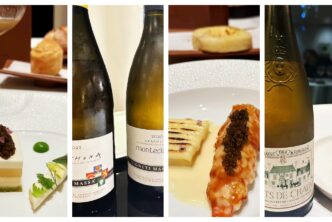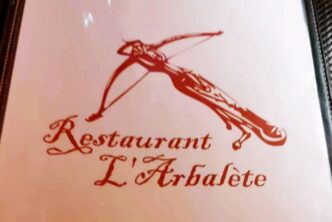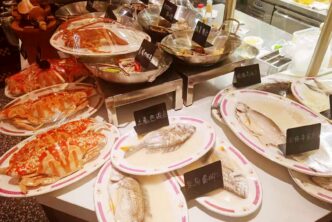Albergo Ristorante Real Castello
P.za Canonico Borgna Don Pietro, 9
12060 Verduno, Italy
Tel. +39 0172 470125
The dishes
Burro e acciughe (butter and anchovies)
Lingua in salsa (beef tongue in sauce)
Gnocchi al ridotto di Verduno Pelaverga (gnocchi with a Verduno Pelaverga wine sauce reduction)
Giura con le sue guarniture (giura with its condiments)
Tome (cheese course)
Pesca al vapore alla ghiaccia di Barolo del Comune di Verduno, gelato alla vaniglia (steamed peaches with barolo del Comune di Verduno ice and vanilla ice cream)
The wines
Fratelli Alessandria 2021 Nebbiolo Langhe Prinsiot 91
Castello di Verduno 2019 Barbera d’Alba Bricco del Cuculo 92+
G.B. Burlotto 2021 Barbera d’Alba Aves 93
i Brè 2019 Nebbiolo Langhe 91
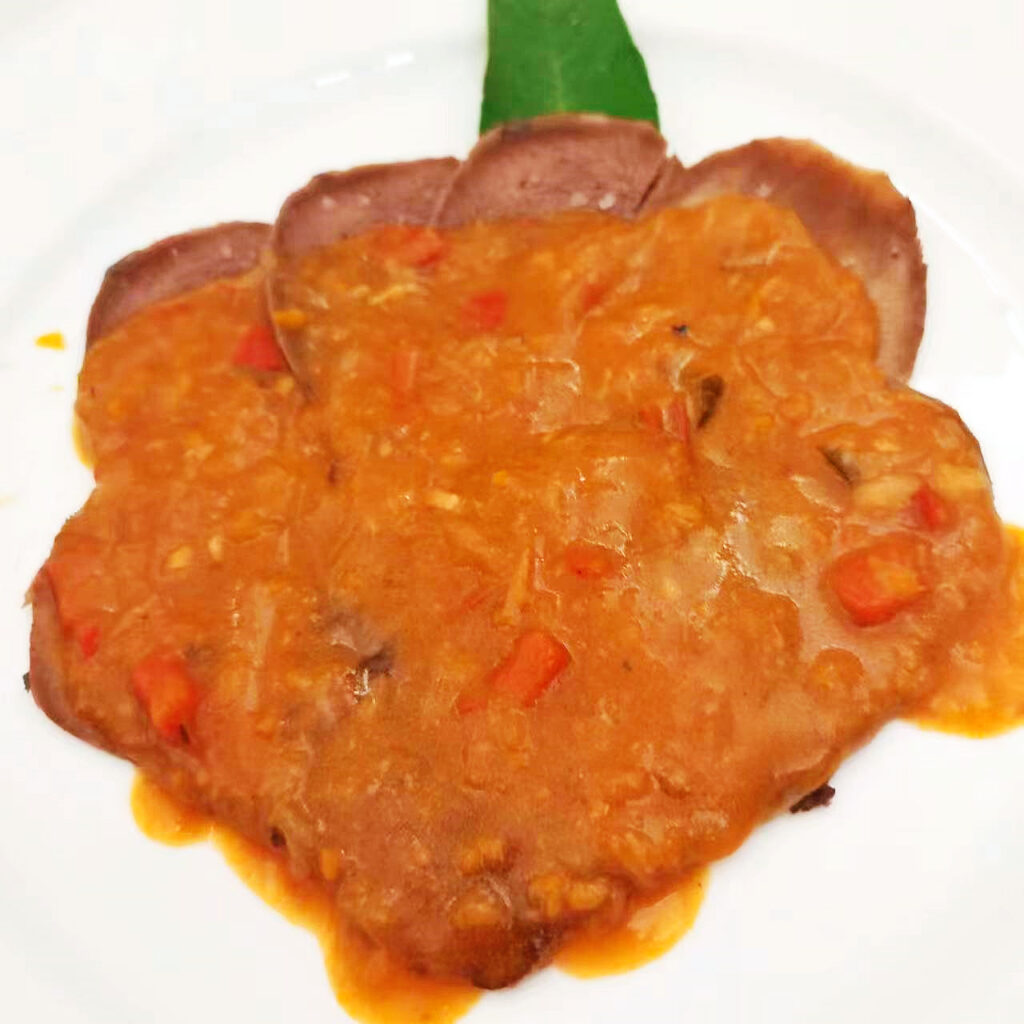
It’s not often that you get to eat in a real castle, but that’s exactly the experience you will have when you dine in Verduno’s excellent Albergo Ristorante Real Castello (which as the name implies, also doubles as a charming, warm hotel). The restaurant, opened on July 9, 1953, is currently celebrating its seventieth anniversary, but the castle it is housed in goes quite a bit farther back in time than that.
The Castello di Verduno’s origins (literally, the castle of the town of Verduno) dates back to 1500, when it’s construction was initiated by the the Cerrato family and it underwent a number of ownership changes over the centuries. But what matters most is that it was bought in 1909 by the Burlotto family, a name well-known to anyone who loves Barolo. And it was in that fateful 1953 that the Commendatore Giovanni Battista Burlotto turned part of the castle into the hotel it is today as well as re-activated the cellars for Barolo production. Today it is Burlotto’s descendants who run the place: Elisa Burlotto, daughter of Giovanni Battista oversees the whole operation, with her daughters running the various portions of the enterprise. Alessandra Buglioni di Monale (whose husband is well-known Barbaresco producer Olek Bondonio) is in charge of the restaurant of which she is the very talented chef (she trained at the Lucas Carton in Paris and at the Sooke Harbour House on Vancouver Island). Alessandra also has passion for herbs and flowers and along with her own daughter is an accomplished mixologist, creating new inventive cocktails or just preparing the classics in a perfect way. Elisabetta Buglioni di Monale follows all the family hotel services. Both ladies are also directly involved in other meritorious activities, such as art projects.
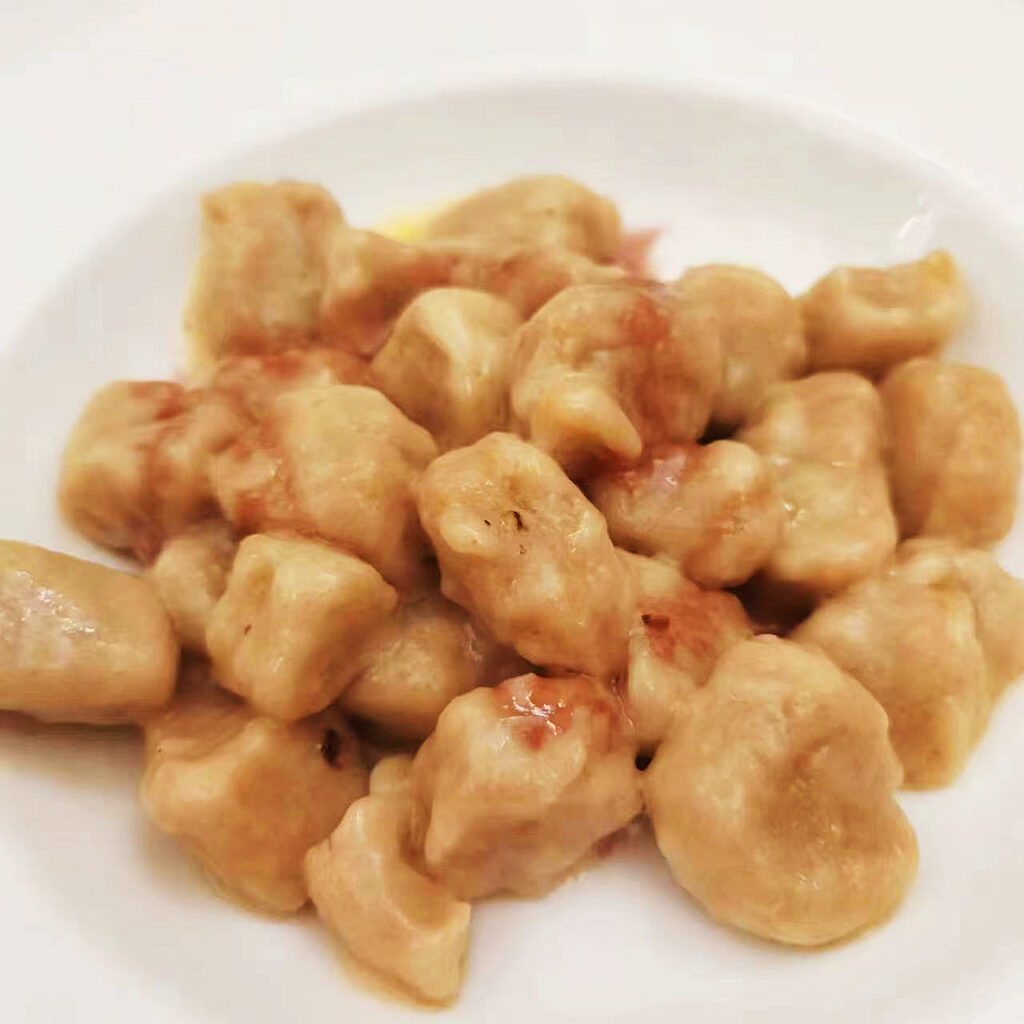
The castle is just as you’d expect it, with high ceilings, thick walls and beautiful grounds; the garden is especially inviting and the perfect place to have an aperitif sitting outside before starting dinner. The meal began in fine form with the classic rendition of burro e acciughe (or butter and anchovies in English), one of the world’s great food combinations (other examples might be coffee and chocolate, blue cheese and honey, roast turkey and cranberry sauce) that traces its roots to a time when the Piedmontese, who have no direct access to the sea, used to trade their wines and other foodstuffs with the Ligurians for the likes of anchovies and common salt. The sweetness of the butter is a perfect foil for the extreme saltiness of the anchovies and the two really mesh together; furthermore, the dish offers a nice play on contrasts of textures, such as between the thick, almost crunchy bite of the anchovy meat and the creaminess of the butter. It’s just an unbelievably great pairing of ingredients, and like many of the world’s best recipes, unites two very simple ingredients to come up with a whole that is even better than its already good individual parts.
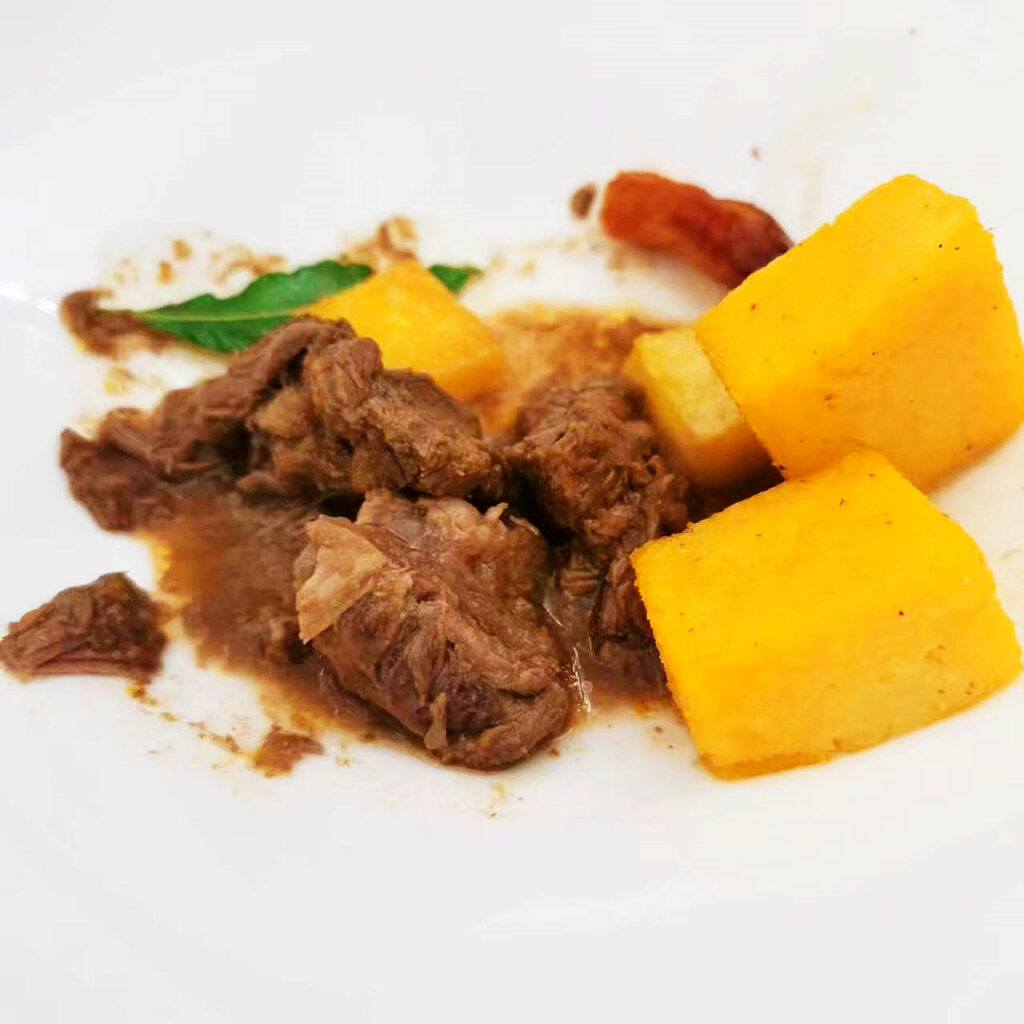
Next up was, in many respects, the DOTN (or Dish Of The Night): the lingua in salsa (beef tongue in sauce) was presented in a not commonly rendered version that was both flavourful and memorable. This dish was created by the family upon Giovanni Battista Burlotto’s return from Africa by the family chef Michelina, who combined sage, onions and vinegar to create the first version of the sauce. However, Giovanni Battista himself and his daughter Elisa (Lisetta) improved upon the original by adding stewed vegetables and a touch of berbere. Berbere is an Ethiopian spice mix that can be fairly complex to make, especially outside of Africa and Asia, as it includes many ingredients that are not commonly found or easy to get elsewhere, such as in Europe or North America. It is generally a mix of chili peppers, garlic, ginger, coriander, besobela (Etiopian holy basil); korarima (also known as Ethiopian coriander or false coriander, it’s obtained from the seeds of a perennial flowering plant of the ginger family); rue (a herb typical of the Balkan peninsula); ajwain and/or radhuni [beware that these two, though closely related, are not the same thing: ajwani or ajowan caraway is common to India, Iran and Northern Africa, and both the leaves and fruit-like seeds are used in cuisine (the latter are pungent and resemble anise); radhuni is typical of South and Southeast Asia and its aromatic dried fruit is mostly used in Bengali cuisine]; fenugreek (most commonly used in the Indian subcontinent, it has been used as a culinary ingredient since ancient times, but in small doses only given its potential to cause allergic reactions); and nigella (native to eastern Europe and Western Asia, it is now grown world-wide and is a spice used in many cuisines). In some versions, cloves and long pepper [long pepper, or Piper longum in Latin, is closely related and not that dissimilar in taste to black pepper (Piper niger) but its cultivation has diminished greatly all over the world because it is much harder to grow than both black pepper and chili peppers] are also included. Long-held family recipes being the well-guarded secret that they are, I have no idea just how complex the composition of the berbere used by the Albergo Ristorante Real Castello is, but what I can tell you is that the sauce it is infused with is just delicious. Whatever you do, it’s a dish you must try (but make sure you are prepared to accept a hint of sourness in your foods: the sour sensation imparted by the vinegar really freshens the dish and makes it an absolutely ideal summertime starter: but frankly, this thing is so good you can and should eat it any time of the year).
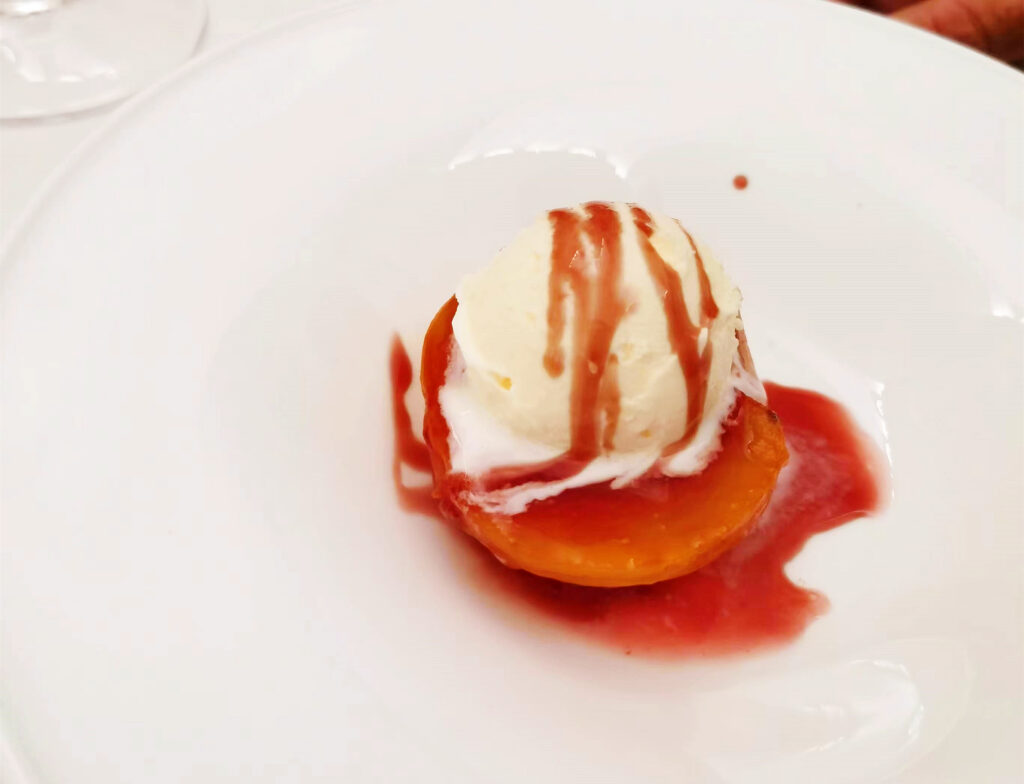
A successful night of dining is easily measured by the number of the evening’s dishes you’d be happy to order again next time out. And so it was on this night, where the lingua in salsa would have been enough to evoke “two culinary thumbs up”, but there were more goodies in store. In fact, the evening’s next two dishes also duked it out for the title of DOTN: the gnocchi and the giura were not just flavourful, but, each on its own way, somewhat memorable. It was fun to try the local wine glory, Verduno Pelaverga, in a pasta sauce: and it was delicious indeed, adding a little acid bite to the sweetness of the reduced tomato sauce.
The meat dish that followed was perhaps less innovative, but highly satisfying too. Most wine and food lovers know that Piedmont is famous for its many fine wines and truffles but perhaps not every would-be sybarite out there is aware that the region also lays claim to a species of breed of bovine, the so-called razza piemontese (or translated, Piedmontese breed). Members of that breed are large bovines with a white coat and are one of the best meat cows of Italy, but it wasn’t always so: in fact, it has a long history of being a source of both milk and meat in Piedmont (and is if that wasn’t enough, the animals were also routinely used to work in the fields). But that all changed in 1886, when in the small town of Guarene d’Alba, near Cuneo, a spontaneous mutation caused the birth of a huge bull with exceptionally big and thick, heavily muscular, thighs. Even the young veals of this breed are now characterized by exceptionally thick hind quarters. The giura is the local name for the female cow, and it too is used for numerous Piedmontese food preparations once the animal has reached an age where it is no longer suitable for reproductive purposes. Examples of delicacies produced with its meat include the salame di Turgia (70% cow meat, 30% pork meat and lard, salt, pepper and spices, matured for twenty to thirty days), typical of the Lanzo Valley, and the salame ‘d gioria, typical of the Piedmontese area of Carmagnola. At the Real Castello they braise the meat slowly for at least three hours in its own juices and that of the vegetables and spices it cooks with, with no added fat except its own. Elisa Burlotto told me specifically that she is not aware of any other food preparations of the Langhe that contemplate the use of giura.
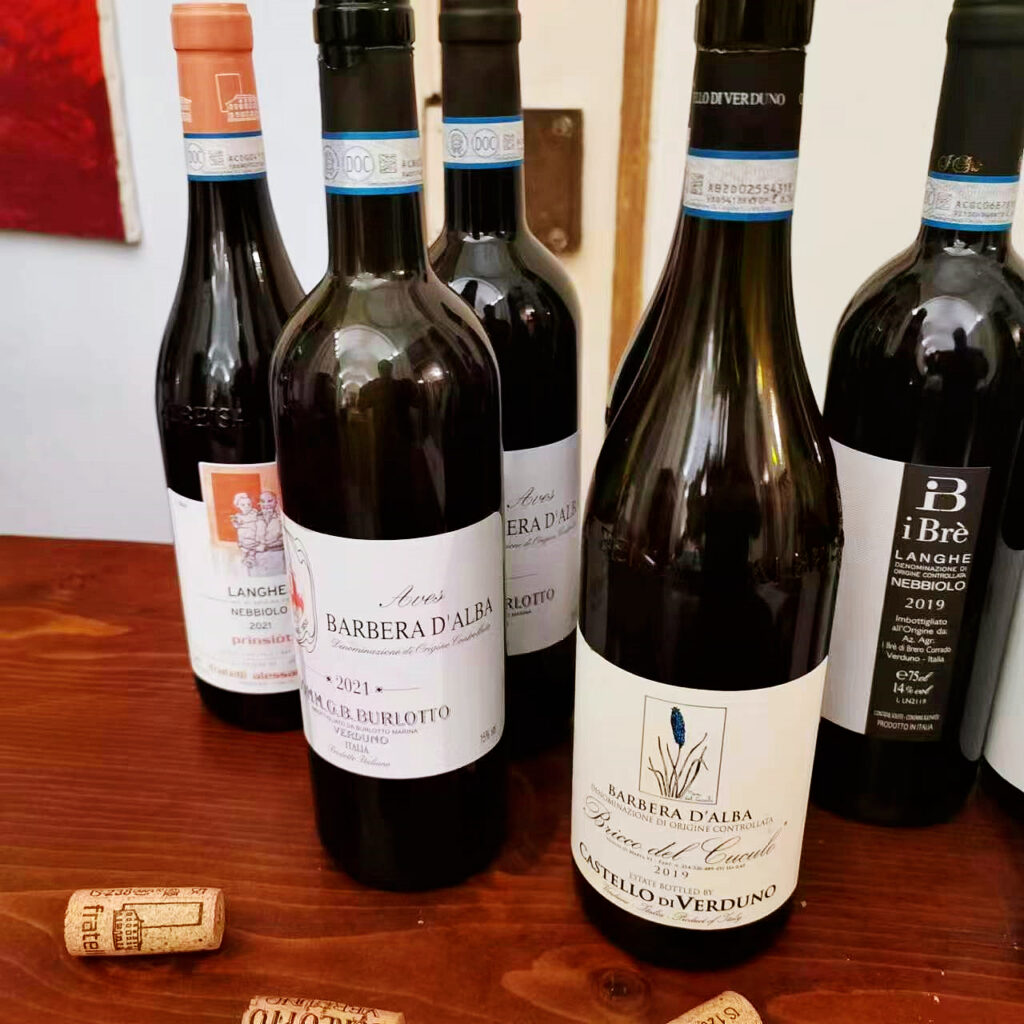
So now you know Real Castello’s food is wonderful. Given its location in Verduno, you’d also have the reasonable expectation of an interesting wine list. And it is just so, with many of the Langhe’s best wines, and not only the Langhe’s, available to discerning palates. When in Rome do as the Romans do, and when in Verduno might as well do as the locals do, and so I normally pick either Verduno Pelaverga or Barolo to drink. But on this night, I opted for something completely different, and the four wines I chose were all real winners. The Fratelli Alessandria 2021 Nebbiolo Langhe Prinsiot (the wine’s name is that of the family’s nickname) is made from roughly ten years old Nebbiolo vines grown on limestone and sandy-silty soils of the Neirane, Pisapola and Sotto Orti vineyard areas. Its gorgeously crisp, fresh and fruity (you’ll never guess it spends six to eight months in large oak barrels) and makes just a beautiful luncheon wine ideal with lighter meat dishes but pizza and pasta dishes too. The Castello di Verduno 2019 Barbera d’Alba Bricco del Cuculo is one serious Barbera wine: brimming with notes of spices and licorice, it’s blessed with a real tannic backbone thanks to the fourteen months oak aging it receives. No wimpy, tannin-less Barbera wine here, which, depending on how you tastes run, might be a good or not so good thing: still, this is an excellent example of oak-aged Barbera wine, and one that will benefit from a few more years cellaring (hence the “+” on my score). It is likely that, a few years from now, the G.B. Burlotto 2021 Barbera d’Alba Aves will be looked at as one of the best, if not the best, talented Fabio Alessandria has ever made. It helps that he has scaled back the oak quite a bit, so what used to be a heavy-set wine that appealed mostly to international palates is now a wine of noteworthy gracefulness and fluidity, with the variety’s telltale red and blue fruit aromas and flavours complicated by strong whiffs of violet and lifted by nicely supportive acidity. Just lovely. A little known but high-quality estate that makes generally very fresh, light on their feet and very fruity wines marked by noteworthy purity, the i Brè 2019 Nebbiolo Langhe is everything those who like big fat sweet wines appreciate less and shy away from: by contrast, those who like filigreed wines with a translucent beauty to delicate pure red fruit and floral aromas and flavours will love this.
This was a lovely, laid -back, fun evening spent in royal surroundings, and you might say, very appropriately characterized by a meal fit for kings.

 中文
中文
